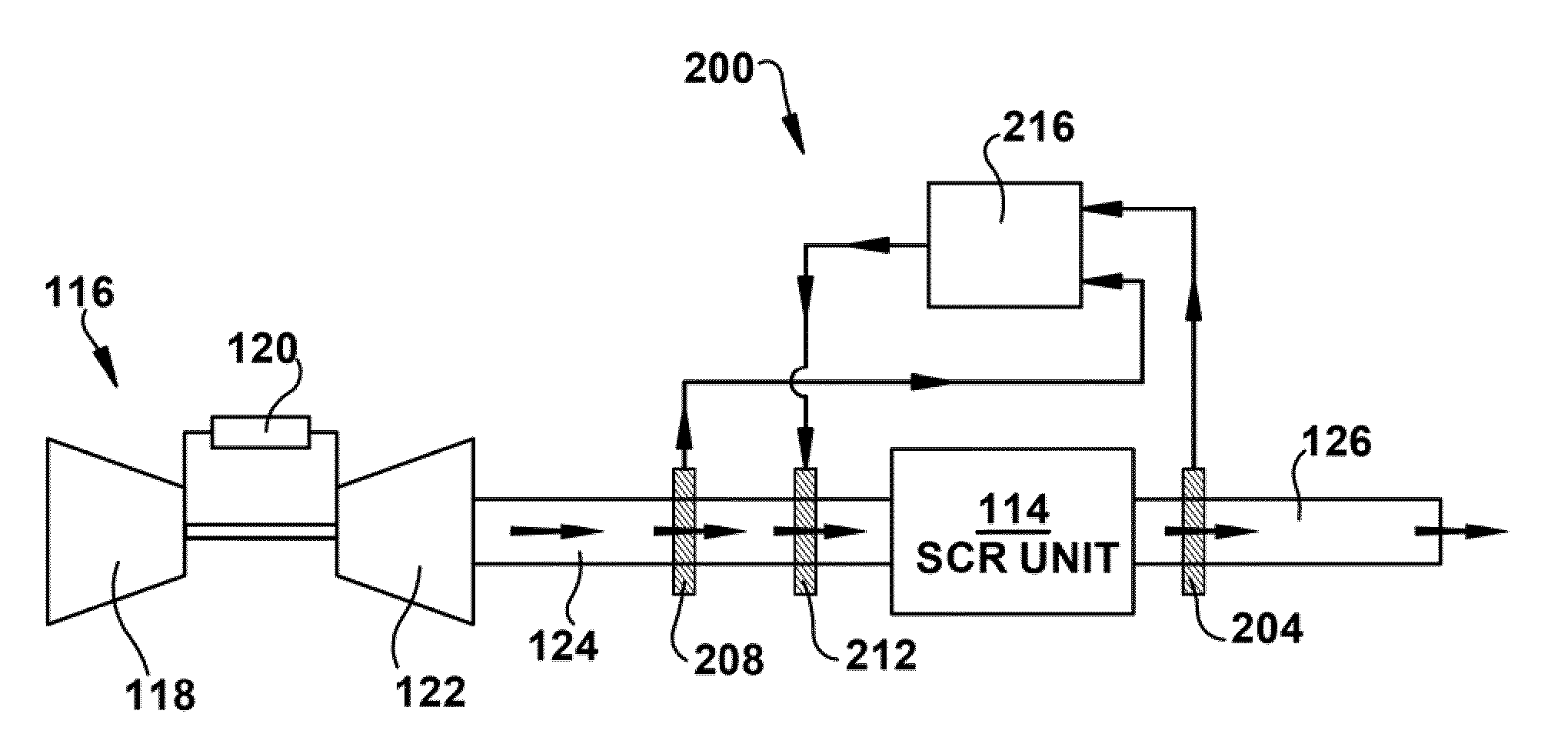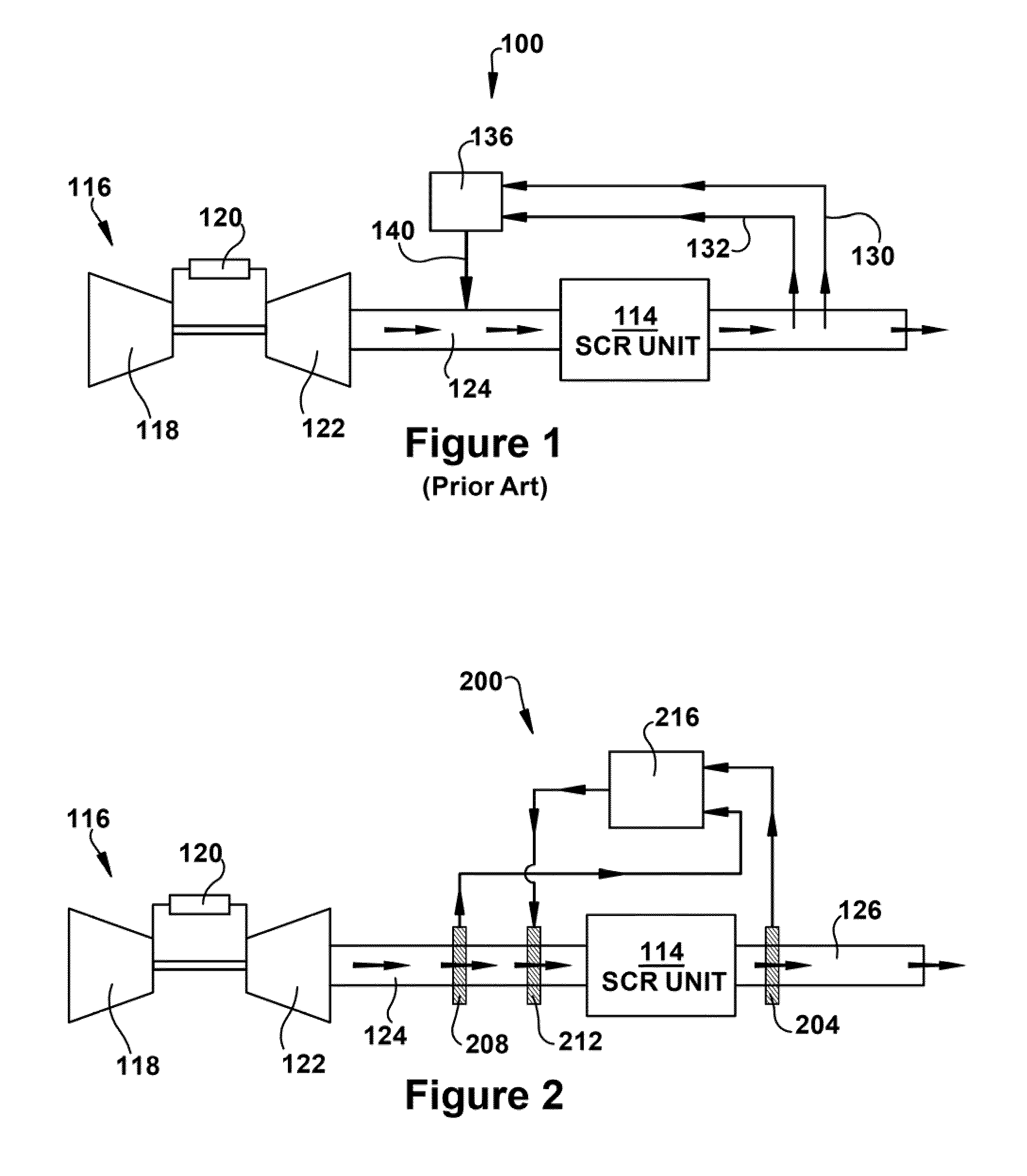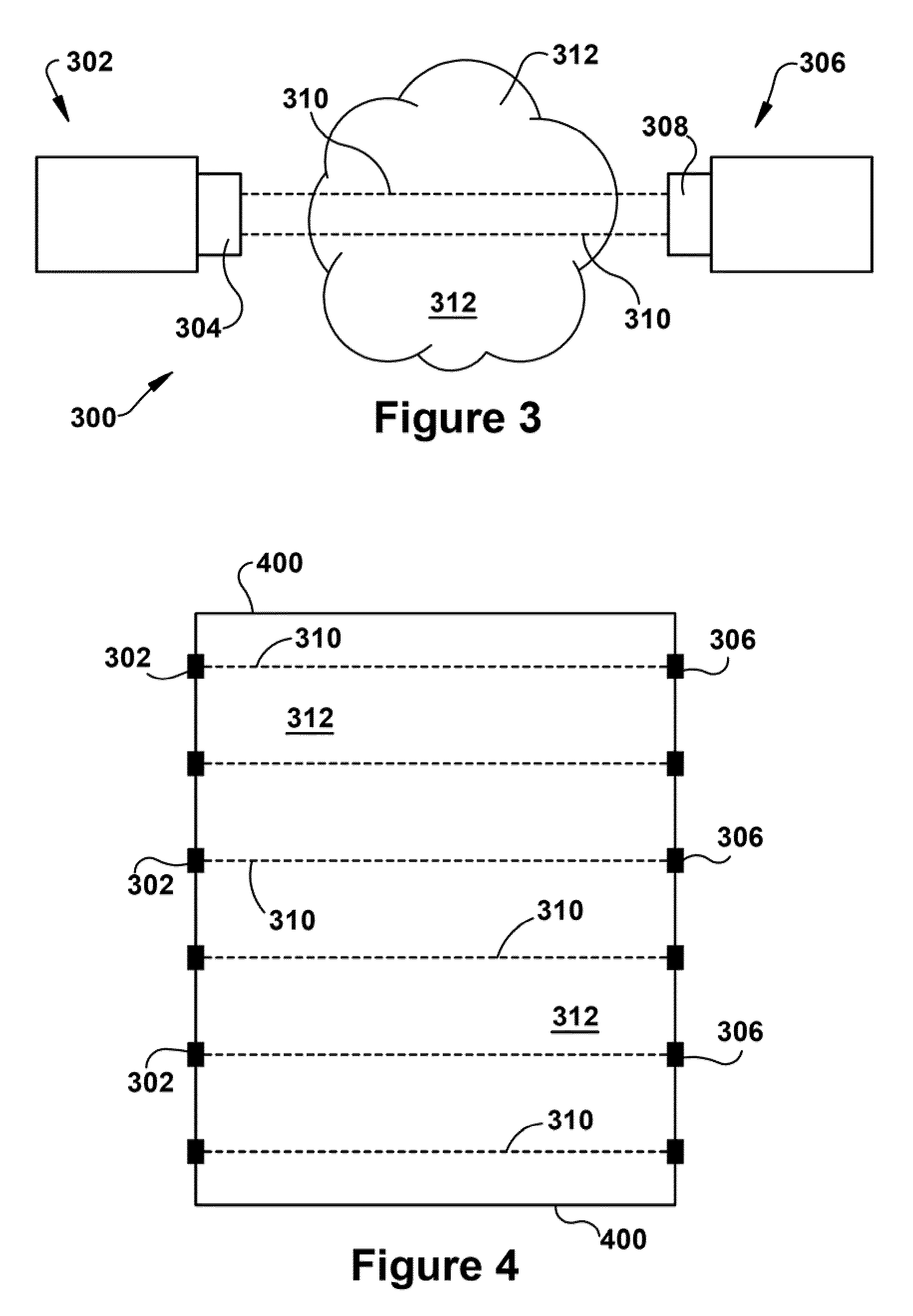Systems and apparatus relating to the monitoring and/or controlling of selective catalytic reduction processes
a technology of selective catalytic reduction and monitoring and control, applied in the direction of exhaust treatment electric control, separation process, instruments, etc., can solve the problem of excess nox (beyond acceptable limits) being the amount of nitrogen oxides (or “nox”) released into the atmosphere, and significant form of air pollution
- Summary
- Abstract
- Description
- Claims
- Application Information
AI Technical Summary
Benefits of technology
Problems solved by technology
Method used
Image
Examples
Embodiment Construction
[0020]Reducing and controlling engine emissions of oxides of nitrogen are important considerations for internal combustion engines, particularly those used in large power generating operations. As stated, NOx emissions are an element of smog production. Stringent NOx emission limits already are mandated by state and federal governments and are likely to become even stricter in the future. One known approach to reducing NOx emissions is to reduce NOx formation by reducing combustion temperatures, such as by recirculation of exhaust gas into the engine firing chambers to dilute the combustion mixture. Even under the best of control, however, untreated engine exhaust typically contains an unacceptable level of NOx. Thus, another approach is to strip NOx from the exhaust via one or more after treatment devices.
[0021]After treatment systems are known in the art which can convert NOx to elemental N2 by selective catalytic reduction in the presence of a suitable reductant, for example, amm...
PUM
| Property | Measurement | Unit |
|---|---|---|
| lag time | aaaaa | aaaaa |
| lag time | aaaaa | aaaaa |
| absorption wavelength | aaaaa | aaaaa |
Abstract
Description
Claims
Application Information
 Login to View More
Login to View More - R&D
- Intellectual Property
- Life Sciences
- Materials
- Tech Scout
- Unparalleled Data Quality
- Higher Quality Content
- 60% Fewer Hallucinations
Browse by: Latest US Patents, China's latest patents, Technical Efficacy Thesaurus, Application Domain, Technology Topic, Popular Technical Reports.
© 2025 PatSnap. All rights reserved.Legal|Privacy policy|Modern Slavery Act Transparency Statement|Sitemap|About US| Contact US: help@patsnap.com



